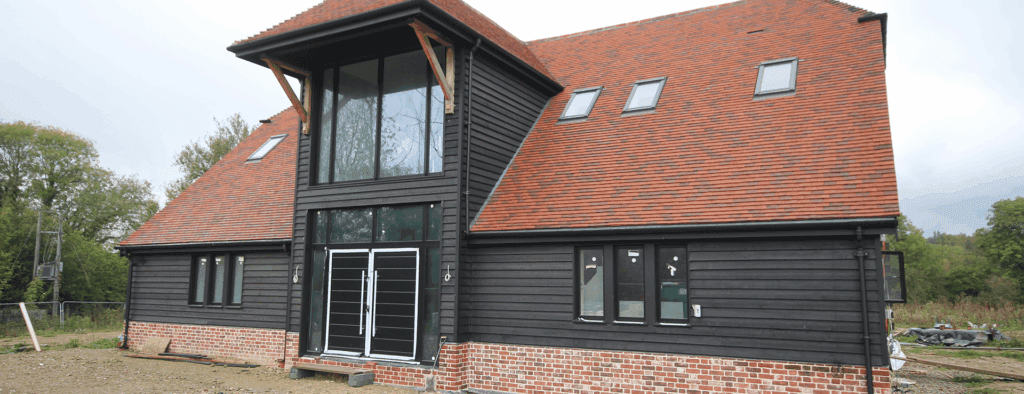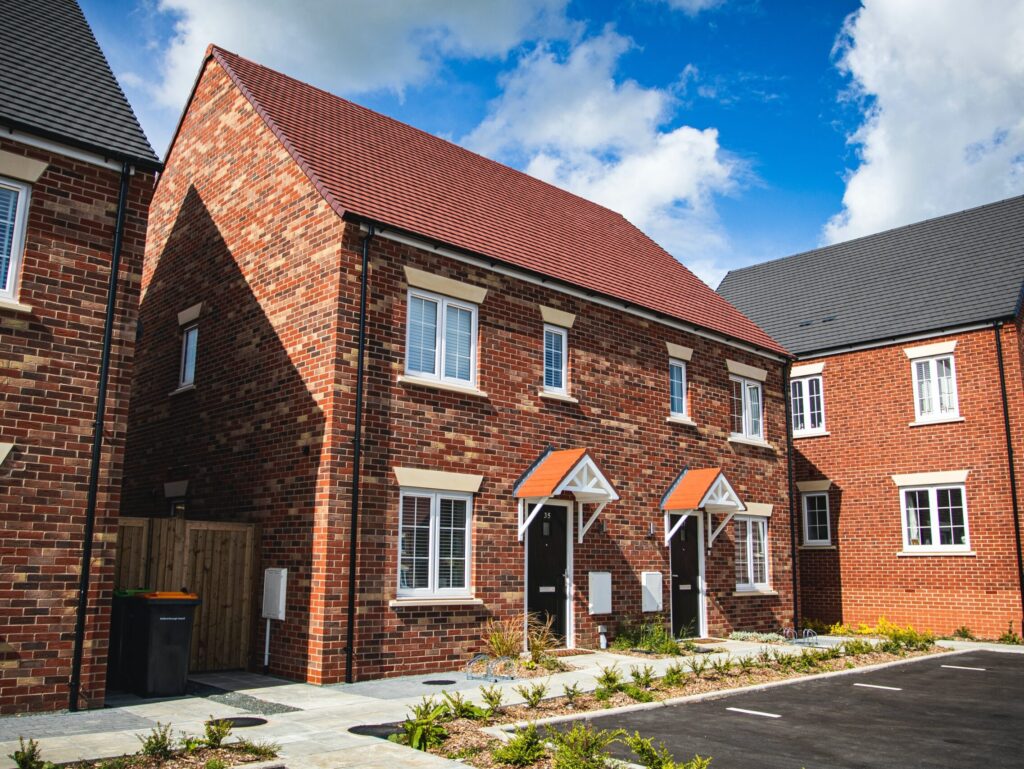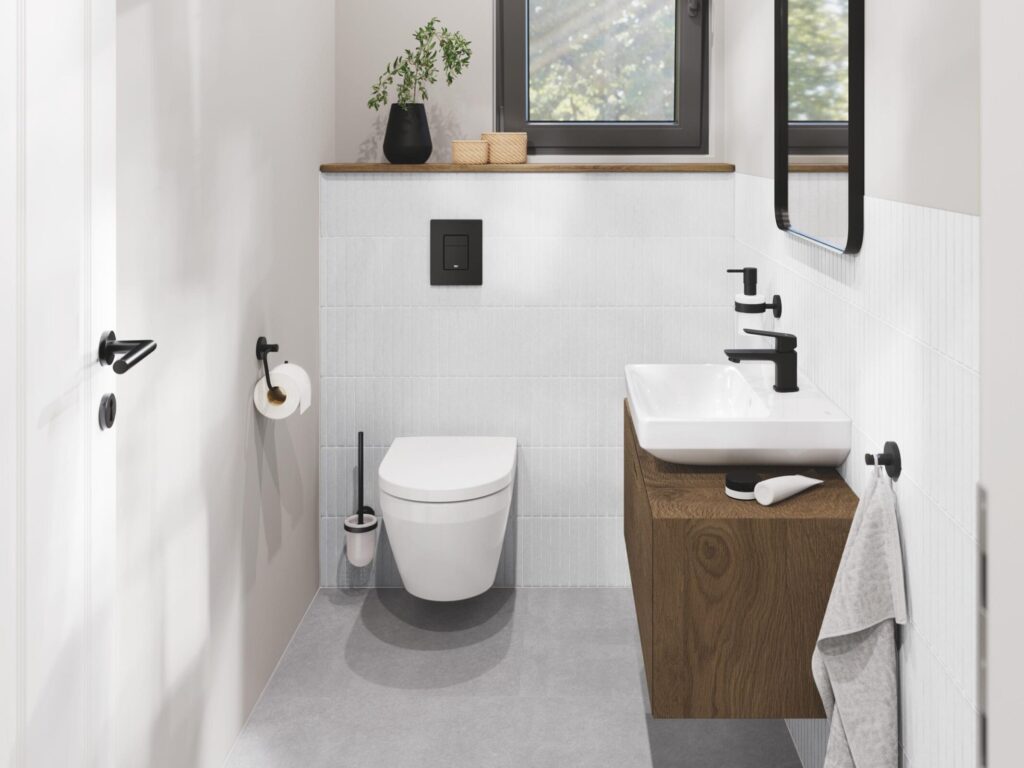Showhome Editor Joseph Clarke speaks with industry professionals to find out what really drives them to be greener and if we are on the right track to reaching net zero goals
As we enter a new year that is set to present both developments and challenges in the housebuilding sector, sustainability remains in high demand as concerns grow around the UK’s ability to reach net zero by 2050. According to World Economic Forum, “we can’t tackle climate change without tackling the construction industry”, as “planet-damaging carbon dioxide emissions from buildings and construction are jeopardising global goals to keep devastating climate change at bay”.
This worry is affirmed by the Global Alliance for Buildings and Construction (GlobalABC), in a report explaining that “the use of coal, oil and natural gas for heating, lighting and cooking fuelled a rise in emissions from the operation of buildings to about 10 gigatons last year, including direct emissions and indirect emissions from power generation.” In this report, GlobalABC also reveal a rather shocking figure: “Building operations and construction now account for nearly 40% of global energy-related CO2 emissions.”
The message is therefore very clear: While great efforts are being made within the housebuilding sector, by builders and manufacturers alike, a lot more needs to be done. Not so long ago, sustainability could arguably have been considered a mere trend, but it has now become a must and therefore a top priority for all industries.
While sustainable solutions to housebuilding come with their challenges, like higher costs or the need to find specialised workers, sustainability is now at the forefront of the housebuilding industry, with housing developers, house builders, designers and manufacturers employing greener practices, using renewable resources, or integrating other environmentally friendly initiatives into their products and services.
I thought it would be interesting to learn the perspective of those working within the housebuilding industry, by finding out exactly what is being done, what challenges they are facing and what else needs to be done; and gain a better understanding of what drives businesses and organisations to be greener. I felt curious to discover whether the motivation stems more from the need to comply with legal requirements, meet customer demands, or a genuine interest in doing their part to help the planet we live in.
The drive to be green
My first point of contact was with Designer Contracts, who recently shared a press release showcasing their Sustainability Champions Campain. Designer Contracts are no stranger to the growing demands from customers for green solutions. Speaking with their Commercial Director, Louise Waters, I asked what it was that motivated them to be more eco-friendly, to which she replied:
“Essentially the motive for Designer Contracts’ focus is that sustainability comes from the very top. As a still-independent company, MD Peter Kelsey is a passionate believer in everyone doing their bit for the environment and action for climate change, with the business sector in particular having a responsibility to lead by example. This approach is one which has percolated throughout the whole business with colleagues at all levels inspired to get behind the company’s wide-ranging initiatives around sustainability.”
In the past, concerns regarding the impact our daily lives had on our environment, and more specifically, the negative effects that the construction industry had, were perhaps not quite enough to actually spark a strong enough reaction to promote change through collaborative action. However, the personal desire to help our planet, as is shared by the team at Designer Contracts, is now very much a commonality across the industry.
This was confirmed when I spoke with Kingswood Homes. When asked the question, “do you find sustainability to be somewhat of a burden?”, their answer was plain and simple, “definitely not!”. James Brown, Architectural Director of Kingswood Homes went on to reveal that in addition to wanting for himself and his company to do its part for the environment, a further motive for incorporating greener practices into their offerings was to be more inclusive and not restrict customers.
Simon Bodsworth, Managing Director of Daval Furntiture, expressed a family-driven desire to make Britain greener, sharing:
“I am constantly inspired by the clear vision of my parents to help other families enjoy the benefits of practical, beautiful, and British-made furniture. This means I am proud to champion British industry and see sustainability as a big part of my mission. For the past decade, I have encouraged people to buy British and to support homeland business as a way to reduce our carbon footprint, and to celebrate the amazing products and services available on a local, national and international scale. The furniture industry thrives on innovation, therefore anticipating the needs of an increasingly discerning customer is paramount to sustained growth and market buoyancy.”
My final point of contact was with Caesarstone UK, designer and manufacturer of quality surfaces. When asked what the main driving force behind their sustainable practices and products was, Jonathan Stanley, VP Marketing, shared:
“From the sourcing of our raw materials, through design, to our manufacturing process, we are consistently moving towards greener practices and reducing our carbon footprint. Sustainability can’t be just a buzzword. Consumers are becoming increasingly conscious of their buying habits, especially when it comes to designing their homes, something we have been working with our commercial partners on for a number of years. While we are moving in the right direction, sustainability is an ongoing endeavour. As a business, we are committed to moving towards a greener future, designing products with minimal impact on the environment and reducing the overall impact of the business.”
To both demonstrate and strengthen this commitment, house builders, designers and manufacturers alike have carried out extensive studies and surveys in order to establish a strategic plan that will drive their green services even further. I learnt from Jonathan that Caesarstone, for example, put together its first ESG report back in 2020 to capture its ongoing efforts to improve and expand upon its product range, environmentally responsible production, health and safety and social responsibility. Jonathan explained that the ESG Progress Report demonstrates that sustainability is a natural extension of their core business value, realised through the “continuous innovation of our products and processes, and our focus on the entire value chain.”
This commitment has been well received, with Caesarstone and other companies across the nation being recognised for their green work upon achieving the Environmental Product Declaration (EPD), something that Jonathan and the Caesarstone team are “extremely proud of” and which encourages them to work even harder. In the case of Caesarstone, this means “working towards 100% renewable energy” at their production sites and “reducing our carbon footprint by 20% in 2025.”
When also posed with the question of whether sustainability had become somewhat of a burden for the company, Jonathan shared a similar view to others, further demonstrating the progressive, more positive mindset of our business owners and customers towards sustainable practices:
“We see it as an essential part of a modern and progressive business. We feel privileged to be part of everyday life in millions of homes worldwide, that is why we are committed to sustainability and want to pave the way towards a greener future. When it comes to conversations around sustainability, it is never a burden. Sustainability is paramount in the building and construction industry, and we want to continue being the leaders in this movement towards greener processes. Through the continued innovation of our products and sustainable production processes, while remaining focused on a value chain built on environmental, health and safety practices, we are proud to be taking the right steps towards a greener future.”
Having spoken with these different sources, all dedicated in one way or another to the housebuilding industry, I must say I was left slightly surprised to hear no mention of pressures to comply with legal requirements or government objectives, like reaching net zero in 2050. Of course, these requirements and objectives are always present, but it is refreshing to know that rather than sustainability being merely an obligation that is being taken on as a must, instead, it stems more deeply from the heart of the individual – the customer, the business owner, the employee.
So, with the driving force strongly in place, and at top speed, my next question was:
‘Is the housebuilding industry on the right track?’
One of the points that particularly stood out for me during my chat with Louise Waters, Commercial Director at Designer Contracts, was when she mentioned, in almost the same words as others I have spoken with, that “sustainability is now at the core of the business”. More importantly, companies around the UK are determined to go one step further along the green path by “continually striving and exploring new ways of doing things to save both waste and energy.” When asked if this was enough for the UK to reach the targets in place for 2050, Louise replied:
“The built environment accounts for 40% of the UK’s carbon footprint, 28% of which comes from operational emissions and 11% from materials and construction. To achieve net zero will require a step change in the design of new buildings. Developers want to reduce scope 3 emissions, which flooring falls into, by 24%, so they are under huge pressure to meet these targets and are appealing to all their suppliers to help them to achieve this.”
In order to do so, Lousie further explained that developers are “looking at their supply chain to share information and data with them, not only in terms of their own carbon performance as a company, but specifically at gathering information on procurement standards, materials selection, product design and the manufacturing process.”
James Brown, Architectural Director of Kingswood Homes, seemed optimistic about the objectives and time frame put in place, although with a tone of slight apprehension due to certain observations in the market:
“25 years is plenty of time but there is some reluctance in the market. One of the biggest issues is that surveyors are not factoring in sustainable features to properties, making it less cost effective to install. For example, installing £15k of renewables may only increase house prices by a couple of thousand. Our Eco Collection has not been as popular as our standard spec range,” said James. When asked why he believed this to be the case, he continued, “Down valuations on properties with sustainable features, gives less incentive for developers to offer this.”
Perhaps the most concerning comment to be taken from all the conversations I have had over this topic was this one. Inevitably, while the self-motivation to incorporate greener building practices and products into their developments has been proven to be present, new builds that indeed incorporate these measures should surely see some sort of financial gain, especially given that they are more often than not associated with higher costs, at least initially.
Jonathan Stanley, Caesarstone’s VP of Marketing, also made an extremely valid point and one which needs to be recognised and tackled in order for the green housebuilding industry to move up a gear: Education.
“We are still at the point of having to continuously educate all levels of stakeholders about sustainable practices. Sustainability will always be an ongoing conversation. As a brand, our impact on the environment is rightly under increasing scrutiny from consumers so we are consistently evaluating ways of improving our sustainable practices and helping them make choices that support positive practices,” said Jonathan.
Finally, speaking from his own experience in the KBB sector, Matt Phillips, Head of UK Operations, Rotpunkt, explained that he is “feeling positive about the direction of travel” but that he “would like to see more collaboration between manufacturers so that we can offer property developers and homeowners alike climate friendly furniture solutions and ensure that sustainable products can be available at all price levels throughout the market.
“If businesses invest in more sustainable processes, they will be making a huge difference to future generations as well as generating a better bottom-line and improving staff retention and wellbeing,” He concluded.
The future
Having spoken with multiple businesses dedicated to the housebuilding industry, it is refreshing to learn that sustainability has now become an integral part of their day-to-day. While in the past mentioning the word “sustainability” was often shunned upon, as it was still an unknown world for most, awareness and knowledge has grown and greener solutions are now more readily available and practised, thanks to better educated professionals and more readily available products and materials. It is not just pressures and obligations to reach carbon friendlier targets that are the force behind the housebuilding sector welcoming environmentally friendly building methods to create sustainable homes. It is largely thanks to the nation’s own awareness and will to do more to help create a better, healthier environment, that our future generations will benefit from. That said, there is still a lot of educating that needs to be done, at all levels, to ensure that sustainability efforts are also given the financial compensation that they deserve.
Read more news and exclusive features in our latest issue here.
Never miss a story… Follow us on:
Showhome
@Your_Show_Home
@Showhomemag
Media Contact
Joseph Clarke
Editor, Showhome
Tel: +44 (0) 1622 823 920
Email: [email protected]












